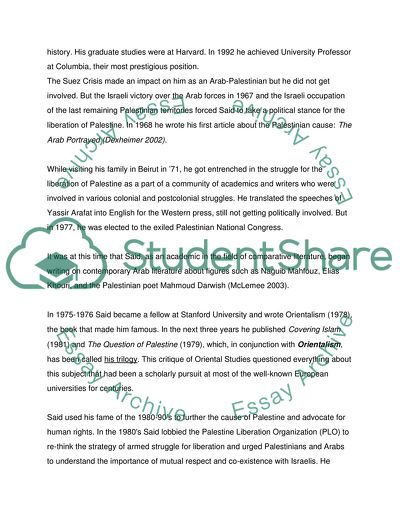Cite this document
(Edward Said: Orientalisms Effect on Art and History Coursework, n.d.)
Edward Said: Orientalisms Effect on Art and History Coursework. https://studentshare.org/performing-arts/1703966-in-what-ways-does-what-edward-said-calls-orientalism-affect-art-and-art-history
Edward Said: Orientalisms Effect on Art and History Coursework. https://studentshare.org/performing-arts/1703966-in-what-ways-does-what-edward-said-calls-orientalism-affect-art-and-art-history
(Edward Said: Orientalisms Effect on Art and History Coursework)
Edward Said: Orientalisms Effect on Art and History Coursework. https://studentshare.org/performing-arts/1703966-in-what-ways-does-what-edward-said-calls-orientalism-affect-art-and-art-history.
Edward Said: Orientalisms Effect on Art and History Coursework. https://studentshare.org/performing-arts/1703966-in-what-ways-does-what-edward-said-calls-orientalism-affect-art-and-art-history.
“Edward Said: Orientalisms Effect on Art and History Coursework”. https://studentshare.org/performing-arts/1703966-in-what-ways-does-what-edward-said-calls-orientalism-affect-art-and-art-history.


